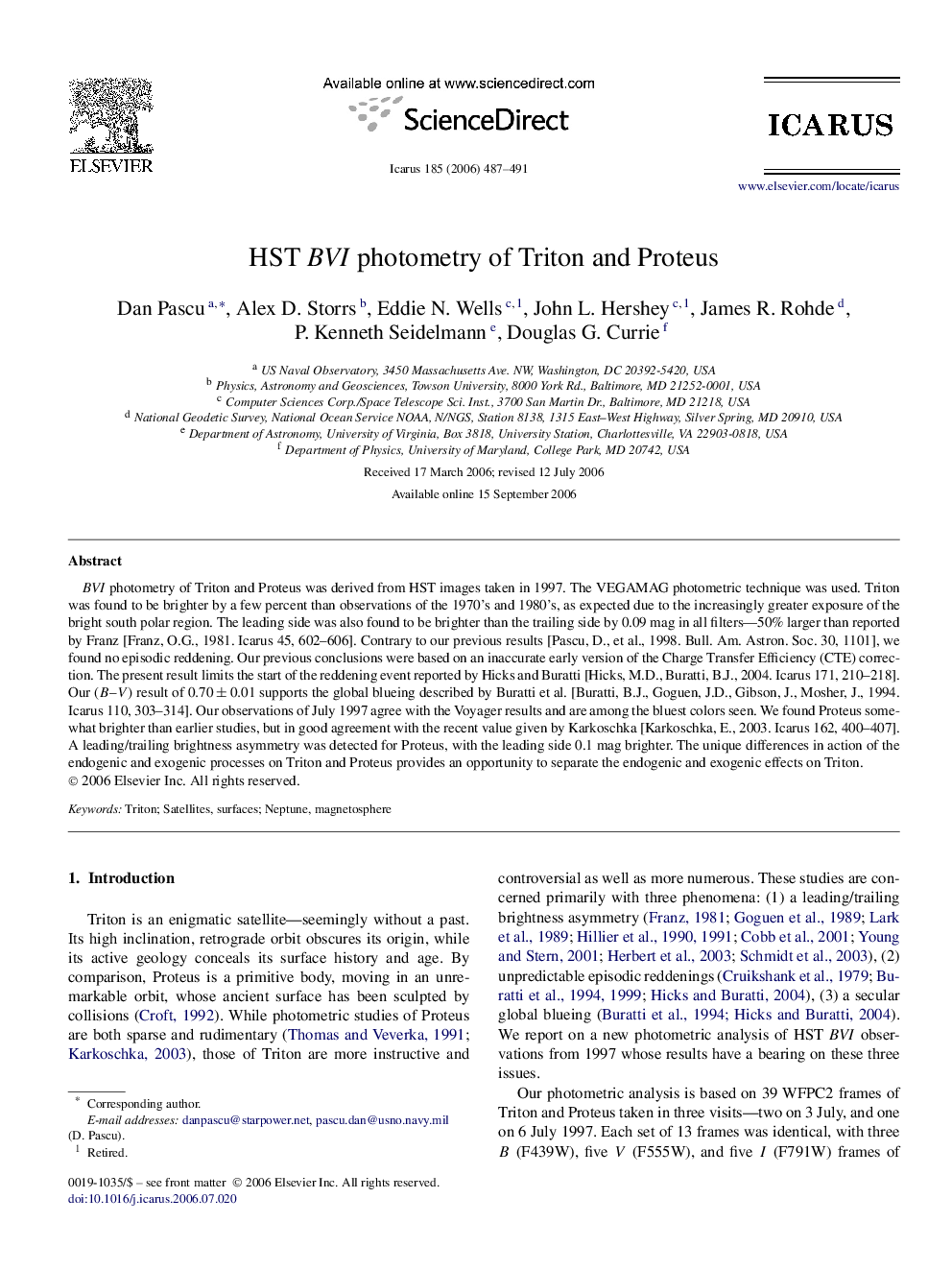| Article ID | Journal | Published Year | Pages | File Type |
|---|---|---|---|---|
| 1775510 | Icarus | 2006 | 5 Pages |
BVI photometry of Triton and Proteus was derived from HST images taken in 1997. The VEGAMAG photometric technique was used. Triton was found to be brighter by a few percent than observations of the 1970's and 1980's, as expected due to the increasingly greater exposure of the bright south polar region. The leading side was also found to be brighter than the trailing side by 0.09 mag in all filters—50% larger than reported by Franz [Franz, O.G., 1981. Icarus 45, 602–606]. Contrary to our previous results [Pascu, D., et al., 1998. Bull. Am. Astron. Soc. 30, 1101], we found no episodic reddening. Our previous conclusions were based on an inaccurate early version of the Charge Transfer Efficiency (CTE) correction. The present result limits the start of the reddening event reported by Hicks and Buratti [Hicks, M.D., Buratti, B.J., 2004. Icarus 171, 210–218]. Our (B–V ) result of 0.70±0.010.70±0.01 supports the global blueing described by Buratti et al. [Buratti, B.J., Goguen, J.D., Gibson, J., Mosher, J., 1994. Icarus 110, 303–314]. Our observations of July 1997 agree with the Voyager results and are among the bluest colors seen. We found Proteus somewhat brighter than earlier studies, but in good agreement with the recent value given by Karkoschka [Karkoschka, E., 2003. Icarus 162, 400–407]. A leading/trailing brightness asymmetry was detected for Proteus, with the leading side 0.1 mag brighter. The unique differences in action of the endogenic and exogenic processes on Triton and Proteus provides an opportunity to separate the endogenic and exogenic effects on Triton.
